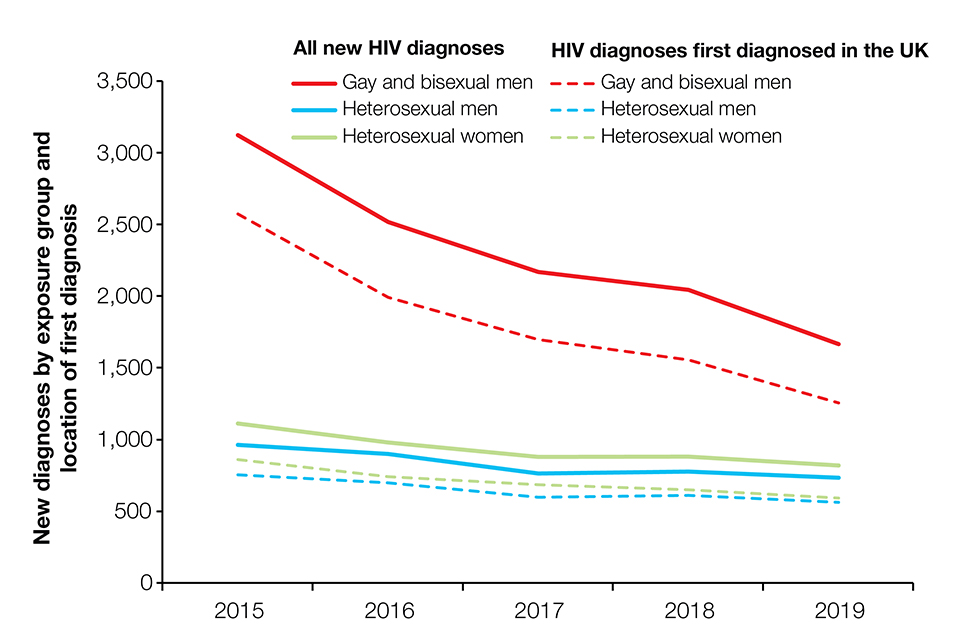HPR volume 14 issues 20 and 21: news (11 November)
Updated 23 December 2020
HIV diagnoses in the UK: 2019 data in summary
Public Health England (PHE) this month published official statistics for new HIV diagnoses, people accessing care in the United Kingdom (UK) and HIV testing in England.
The HIV: annual data tables for 2019 are published alongside a slide set for presentations and a Health Protection Report (HPR) infection report article (see below).
The new data show that in 2019 the UK, nationally, met the Joint United Nations Programme on HIV and AIDS (UNAIDS) 90-90-90 targets for the third consecutive year, with London achieving the most significant improvements in diagnosis, treatment and viral suppression.
Overall, the number of people with a new HIV diagnosis fell by 10% between 2018 and 2019 (from 4,580 to 4,139). Set against a peak of 6,312 new diagnoses in 2014, the decline was 34%.
The figure below illustrates the overall downward trend in new HIV diagnoses in the UK across all exposure groups, irrespective of location of first diagnosis, between 2015 to 2019.

The 1,700 new HIV diagnoses in gay and bisexual men (GBM) recorded in 2019 was the lowest number since the year 2000 (when 1,500 were recorded); the 1,600 recorded in heterosexual adults was the lowest since 1998 (when 1,600 were recorded).
The decline in HIV transmission in GBM is linked to a strategy of combination prevention, including: the use of condoms, pre-exposure prophylaxis (PrEP), frequent HIV testing in a wide range of settings and starting antiretroviral therapy (ART) as soon as possible after diagnosis.
